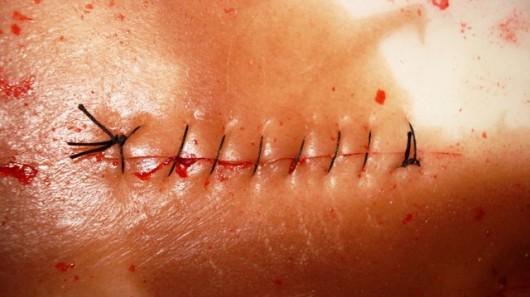It’s vital that surgeons, whether operating on humans or animals, are familiar with how body tissue feels and reacts before conducting their inaugural operation.
However, until recently, many veterinarian students were practicing basic surgical and suturing procedures on carpet pads and pig’s feet before moving on to their first “live” patient. But an invention by Colorado State University (CSU) veterinarians has provided students with a substrate that is infinitely closer to the real thing by developing artificial body parts that closely resemble real skin, muscles and vessels – they can even bleed! Of course the real benefit is that no animals (or humans) are hurt in the procedures.
“It is a significant, stressful leap for medical and veterinary students from the classroom to the surgery suite,” said one of the inventors, Dr Dean Hendrickson, a veterinarian and director of CSU’s Veterinary Teaching Hospital. He adds that the artificial human and animal body parts, such as abdominal walls, provide students with a much greater learning environment that helps bring reality into the classroom.
“Industry standards for training sometimes actually teach incorrect techniques, or skills that don’t translate into real-world situations, so students don’t have the ability to realistically prepare for surgery before a live patient. These artificial simulations help students master their technique, dexterity and confidence before they operate for the first time on a person or someone’s pet.”
Clever use of layers of silicone form the artificial tissues, simulating skin, connective tissue and muscle. Built-in artificial “blood vessels” are connected to an artificial blood source that emulates realistic bleeding.








